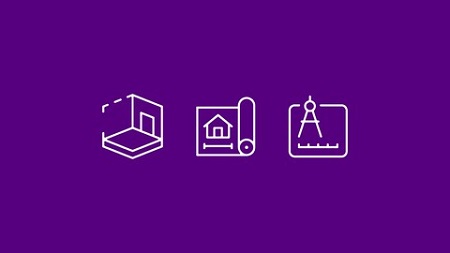
English | MP4 | AVC 1280×720 | AAC 44KHz 2ch | 5 Hours | 989 MB
Become an expert in the most popular Software Architecture style in the world!
Microservices Architecture is the most popular Software Architecture style these days.
Almost every new software designed and built, is doing so using Microservices. And not just that, but there are a lot of legacy applications that are being migrated to Microservices Architecture.
Companies such as Netflix, Amazon, Facebook. Uber and lost more have migrated to Microservices, and it became the de-facto standard for Software Architecture.
That means that a lot of Software Architects are looking for resources about Microservices, but until now – there was no a single, comprehensive course that covered all aspects of Microservices.
And this course does just that.
If you’ll take this course, you’ll know everything there is to know about Microservices.
We start from the very basics – why do we need Microservices and what problems do they come to solve? – and go to the most advanced concepts such as Service Mesh and CI/CD.
By the end of this course you’ll become a real expert in Microservices, and you’ll be able to design advanced, robust Microservices-based systems.
Here is a partial list of what we’ll talk about in this course:
- History of Microservices
- Problems they solve
- The 9 attributes of Microservices
- The Architecture Process of Microservices
- Testing
- Service Mesh
- Common Anti-Patterns
And lots and lots more…
But I want to make this course as practical as possible, and for this reason – I’ve included in it a real-world case study. In this case study we’ll design, together, a system from the ground up using the concepts we’ve learned in this course, since I really believe theory alone is not enough.
But that’s not all…
At the end of this course, you’ll be able to download the Microservices Architecture Checklist, a comprehensive checklist that will guide you through the process of designing Microservices systems, and provide a great summary of what we’ll learn in this course.
Using this checklist will help you design the best Microservices Architecture possible, will help you decide whether you should actually utilize Microservices, and, most important – will make you a better architect.
This course takes you from the absolute basics of Microservices to the most advanced topics, known only to few. Completing this course will give you all the knowledge required for designing Microservices systems, and, as a bonus, will put you in a great position when looking for your next job.
No other course covers this topic in such a comprehensive and thorough way. I’ve put all my 20+ years of experience with hundreds of clients in this course, and I’m sure you will greatly benefit from it.
What you’ll learn
- What is Microservices Architecture and when to use it
- Predecessors of Microservices and the problems with it
- The 9 attributes of Microservices
- Architecture Process of Microservices
- How to design a robust and reliable Microservice
- Techniques for deploying and testing Microservices
- Service Mesh – What it is, its goal, and how and when to use it
- When NOT to use Microservices
- The 3 strategies for breaking Monolith to Microservices
Table of Contents
Welcome
1 Course Introduction
2 Join The Software Architects Community
3 Who Is This Course For
4 An Update for Udemy Students
5 What We Will Talk About in This Course
History of Microservices
6 Introduction
7 Monolith
8 Service Oriented Architecture
Problems with Monolith & SOA
9 Introduction
10 Single Technology Platform
11 Inflexible Deployment
12 Inefficient Compute Resources
13 Large and Complex
14 Complicated and Expensive ESB
15 Lack of Tooling
Microservices Architecture
16 Introduction
17 Componentization
18 Organized Around Business Capabilities
19 Products not Projects
20 Smart Endpoints and Dumb Pipes
21 Decentralized Governance
22 Decentralized Data Management
23 Infrastructure Automation
24 Design for Failure
25 Evolutionary Design
26 Summary
Problems Solved by Microservices
27 Introduction
28 Single Technology Platform
29 Inflexible Deployment
30 Inefficient Compute Resources
31 Large and Complex
32 Complicated and Expensive ESB
33 Lack of Tooling
Designing Microservices Architecture
34 Introduction
35 Mapping the Components
36 Defining Communication Patterns
37 Selecting Technology Stack
38 Design the Architecture
Deploying Microservices
39 Introduction
40 CICD
41 Containers
42 Introduction to Docker
43 Containers Management
44 Introduction to Kubernetes
Testing Microservices
45 Introduction
46 Challenges with Microservices Testing
47 Unit Tests
48 Integration Tests
49 End to End Tests
50 Summary
Service Mesh
51 Introduction
52 Problems Solved by Service Mesh
53 Service Mesh Architecture
54 Types of Service Mesh
55 Products and Implementations
56 Should You Use Service Mesh
Logging and Monitoring
57 Introduction
58 Logging vs Monitoring
59 Implementing Logging
60 Implementing Monitoring
When Not to Use Microservices
61 Introduction
62 Small Systems
63 Intermingled Functionality or Data
64 Performance Sensitive Systems
65 Quick-and-Dirty Systems
66 No Planned Updates
Microservices and the Organization
67 Introduction
68 Conway’s Law
69 The Problem with Traditional Team
70 The Ideal Team
71 Changing Mindset
Anti-Patterns and Common Mistakes
72 Introduction
73 No Well-Defined Services
74 No Well-Defined API
75 Implementing Cross-Cutting Last
76 Expanding Service Boundaries
Breaking Monolith to Microservices
77 Introduction
78 Motivation for Breaking Monolith
79 Strategies for Breaking Monolith
80 New Modules as Services
81 Separate Existing Modules to Services
82 Complete Rewrite
Case Study
83 Introduction
84 Introducing MyLib
85 Non-Functional Requirements
86 Mapping the Components
87 Download the Architecture Diagram
Conclusion
88 Download the Microservices Checklist
89 Conclusion
90 BONUS Next Steps
Resolve the captcha to access the links!